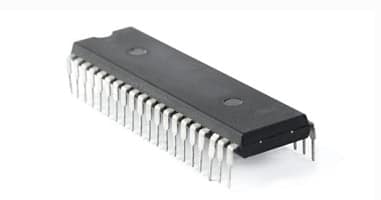What is a solution?
We explain what solutions are and how they are classified, their properties and some examples. Difference between solution and solution.
-
What is a solution?
A solution is a homogeneous mixture formed by two or more pure substances that do not chemically react with each other and are mixed in different proportions and in different concentrations. One of these substances is the solvent and the other (or the others) is the solute.
When a solution occurs, the solute (minority) becomes part of the solvent (majority) in the solution , thus modifying the physical properties of each pure element separately, such as the boiling or freezing point, but without altering the chemical properties of each.
The result obtained, in fact, depends largely on the concentration of solute and especially on its solubility coefficient in the solvent (some substances dissolve better in others).
The solutions are classified according to the state of aggregation of their components, in:
- When the solute is solid : solid solutions in solid, solid in liquid and solid in gas.
- When the solute is liquid : liquid in liquid, liquid in solid and liquid in gas solutions.
- When the solute is gaseous : solutions gas in gas, gas in liquid and gas in solid.
-
Dissolution and solution
For all practical purposes, the terms dissolution and solution are synonyms . Both refer to homogeneous mixtures, although the term dissolution often tends to be used more for mixtures in which the solvent is a liquid, the solute may be liquid, solid or gas.
-
Components of a solution

The solutions have two different components:
- Solvent . The solvent is the solute receptor substance, generally more predominant. It is also known as solvent, dispersant or dispersion medium.
- Solute (s) . In this case we talk about the substance that is received by the solvent, being able to correspond more than one solute at the same time for the same solution.
-
Properties of a solution
The components of a solution cannot be recognized with the naked eye . Nor can they be separated by centrifugation or filtration , but by fractional methods of phase separation, such as evaporation , distillation or crystallization .
This is because it is a homogeneous mixture, in which there are no chemical reactions , but a different result in appearance and physical properties to its predecessor substances is obtained .
Their physical behavior is different from that of their components separately , but, on the contrary, they leave the chemical properties of each one unaltered.
As with other mixtures, we can also obtain different types of solutions (and with them, different behaviors) through the final concentration of the solute in the solvent, thus being able to talk about:
- Diluted solutions , little solute in the same amount of solvent.
- Concentrated solutions , abundant solute in the same amount of solvent.
- Saturated solutions , which achieve the balance between solute and solvent, without being able to add more, at least at given conditions of temperature and pressure .
- Oversaturated solutions , taken beyond the edge of saturation, manipulating pressure and temperature. In this case it is unstable systems.
-
Examples of solutions

Examples of solutions are:
- Sugar dissolved in water.
- Salt dissolved in water.
- Sand dissolved in water.
- Alcohol dissolved in water.
- Vinegar dissolved in water.
- Carbonic gas dissolved in water.
- Sulfur dioxide dissolved in water.
- Hydrogen dissolved in platinum.
- Gold dissolved in mercury.
- Carbon dissolved in iron (steel).
- Zinc dissolved in tin.
- Water vapor dissolved in the air.
- Sublimated iodine dissolved in nitrogen.




